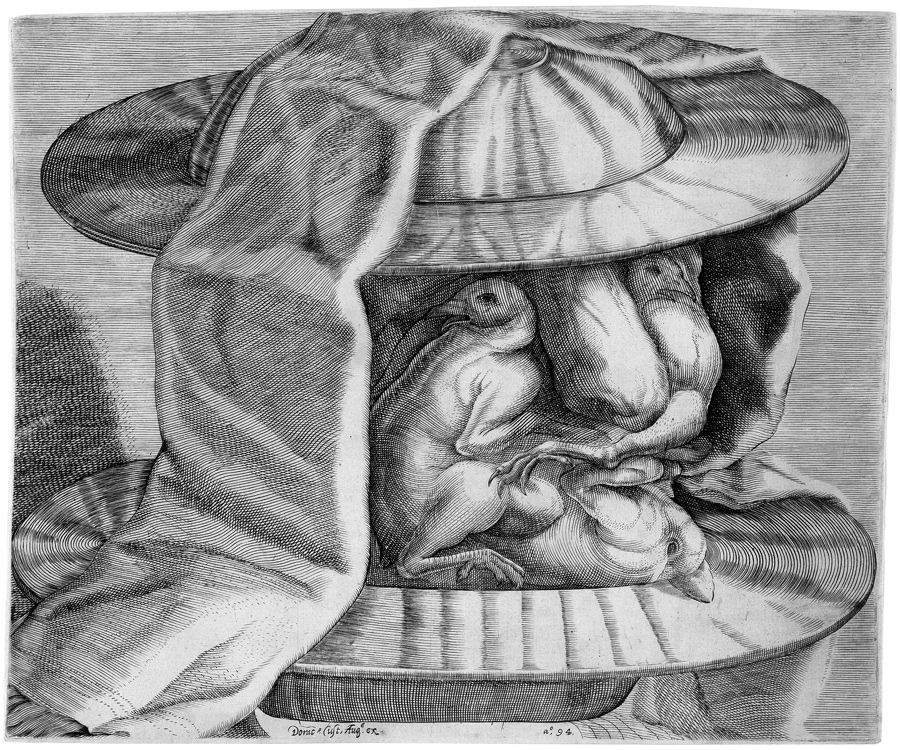Loading the page ...
Domenicus Custos
(circa 1559/60 Antwerp – 1615 Augsburg)
A Fantastic Head in the Style of Arcimboldo. Engraving. 25.1 x 30 cm. 1594. Hollstein 52. Watermark: Small Augsburg Coat-of-Arms (Briquet 2119).
Domenicus Custos, who hailed from Flanders, was the son of the Antwerp painter, Pieter Balten, and the father of Raphael, David and Jacob Custos, all of whom he trained to be engravers. His stepsons, Lukas and Wolfgang Kilian, were also apprenticed to him. In the early 1580s Custos moved for what were probably religious reasons from Antwerp to Augsburg, where he married the widow of the engraver, Bartholomäus Kilian, in 1588. He set up a strictly run and flourishing engraving workshop there based on the Antwerp model, employing his sons as assistants. Custos played a seminal role in the spread of engraving in Germany. Apart from a series of portraits of the Fugger family and the Tyrolean princes his publishing company issued individual reproductive engravings, emblem books and illustrated literary and theological works. Custos’ engraving technique reveals the influence of the Prague style and Dutch Mannerism, especially the example set by Hendrick Goltzius.
1594 saw the appearance of the present, extremely rare print in the style of Arcimboldo. It is a free paraphrase of Arcimboldo’s painting The Cook, which is listed in the 1621 inventory of the collection of Emperor Rudolf II in Prague and is now in the National Museum in Stockholm. The elaborate original created by Arcimboldo, who was a court painter in Prague from 1562 to 1587, shows a head composed of various roasted joints of meat. If the fantasy picture is turned upside down, the joints are served on silver platters held by two hands. Custos’s version is more modest compared to Arcimboldo’s ingenious game of deception. The engraver has contented himself with reproducing a grotesque head formed of roast chicken. As is the case with Arcimboldo, the metal platters serve as headgear and ruff. Custos has added a loosely draped serviette, which provides a visually effective frame for the fearsome head. It can be assumed that Custos produced the engraving both as a tribute to the master, who had died the previous year, and to satisfy the increased demand for popular fantastic creations in the style of Arcimboldo.
A superb, rich and even impression with thread margins. Minor ageing, otherwise in perfect condition.
